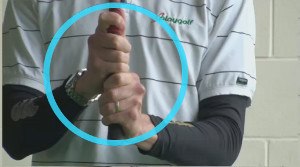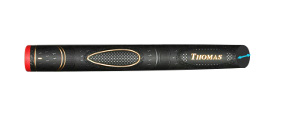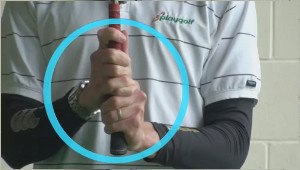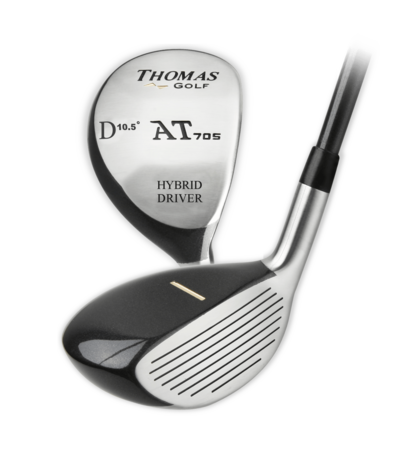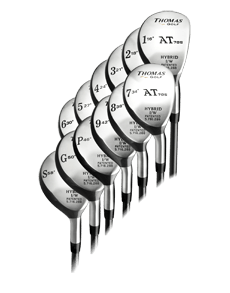O
Q
U
Y
|
Pros and Cons of Every Golf Grip Style |
Best Grip? Overlapping vs Interlocking |
- “Grip it and rip it!”
It’s a rousing phrase, for sure. “Grip it correctly and rip it!” just wouldn’t have the same zing, would it?It would be fitting, though. Because without a proper golf grip, you won’t be ripping anything. Except maybe your scorecard.The grip is where the rubber meets the road, or rather the hands. It’s the single most important – and most personal – fundamental in golf.While there are rights and wrongs when it comes to the golf grip, there’s also room for individualization. A textbook grip may work great for one player, but another golfer might perform better with an unconventional style.
How you hold the golf club affects everything from your swing plane to your backswing length and club position at the top. The slightest grip imperfection can cause a domino effect of compensations starting with the first few inches of the takeaway. Yet many great players utilize “flawed” golf grips.
Talk of the golf grip typically involves two parts: the style or type of grip, and hand position.Grip style regards the placement of the right pinky finger in relation to the left index and middle finger (for a right-handed golfer) on the club. By far the most commonly used styles are the Vardon or overlapping grip, where the pinky rests in the groove between the left index and middle fingers, and the interlocking grip, in which the pinky curls between those fingers. A few golfers use the so-called “baseball” grip, where the fingers are not joined.
Hand position describes the hands’ placement relative to the club’s handle and, therefore, the clubface. A golfer’s grip is said to be “neutral,” “weak” or “strong” based on his hand position, with neutral being ideal.
Most golfers use the same grip style and hand position for their drives, fairway wood, hybrid and iron shots, chips, pitches and bunker shots. In other words, everything except putts.
On the green, players usually switch to a different grip style – and there’s even more variation here. The primary goal of any putting grip is to ensure that the hands work in unison and foster an arms-and-shoulder motion with limited wrist action.Common types of putting golf grips include the reverse overlap, cross-handed or left hand low, and the claw (aka “saw” or “pencil grip”). Golfers who use a belly or long putter may employ a grip adapted to those clubs’ added length.
Golf-Info-Guide.com’s ever-expanding Golf Grip section offers tips on the fundamentals and fine points of this critical task. Our experts provide advice on solving grip problems, changing your grip style or position, adapting your grip to play different types of shots, and determining your most effective putting grip.
We also examine the grips of golf’s greatest players, past and present, analyzing how their grips influence their swings. These breakdowns offer in-depth insight that can translate to your game.
You’ll also find tips on the actual grip – the one attached to your club. Should you try thicker or thinner grips? When should you clean or replace your grips? Perhaps a larger putter grip could cure your yips?
Golf grip techniques are crucial for achieving control, consistency, and power in your golf swing. Here are three common golf grip techniques:
- Overlapping (Vardon) Grip: The overlapping grip, also known as the Vardon grip, is the most widely used grip technique in golf. Follow these steps to achieve the overlapping grip:a. Hold the club with your left hand (for right-handed golfers) and place the grip across the base of your fingers. b. Wrap your left hand around the grip, ensuring that the pad of your left hand rests on top of the grip and the thumb runs down the shaft. c. Place your right hand on the grip, with the pinky finger of your right hand resting between the index and middle finger of your left hand. d. Interlock the pinky finger of your right hand with the index finger of your left hand. e. Ensure that both thumbs are aligned down the shaft and that your hands are connected.
- Ten-Finger (Baseball) Grip: The ten-finger grip, also known as the baseball grip, is commonly used by beginners and individuals with smaller hands. Here's how to achieve the ten-finger grip:a. Hold the club with your left hand (for right-handed golfers) and place the grip across the base of your fingers. b. Wrap your left hand around the grip, ensuring that the pad of your left hand rests on top of the grip and the thumb runs down the shaft. c. Place your right hand on the grip, with all fingers extended and wrapping around the grip. d. The thumb of your right hand should be placed on the right side of the grip (for right-handed golfers), opposite your left thumb.
- Interlocking Grip: The interlocking grip is similar to the overlapping grip but involves interlocking the pinky finger of your right hand with the index finger of your left hand. This grip is commonly used by golfers with smaller hands or those seeking additional stability. The steps for achieving the interlocking grip are the same as the overlapping grip, with the exception of interlocking the pinky finger.
It's essential to find a grip that feels comfortable and secure for you. Experiment with different grip techniques and seek advice from a golf professional or coach to determine which grip best suits your game. Consistency and proper hand placement are key, as they play a significant role in your swing mechanics and control over the clubface. Regular practice and reinforcement of your chosen grip technique will help develop muscle memory and improve your overall golf performance.
If you’ve got a grip-related question, we’ve got the answer. Our experts will have you gripping it—correctly—and ripping it. Rolling it, too.

